Mid-Autumn Festival is an important Moment for Chinese Families
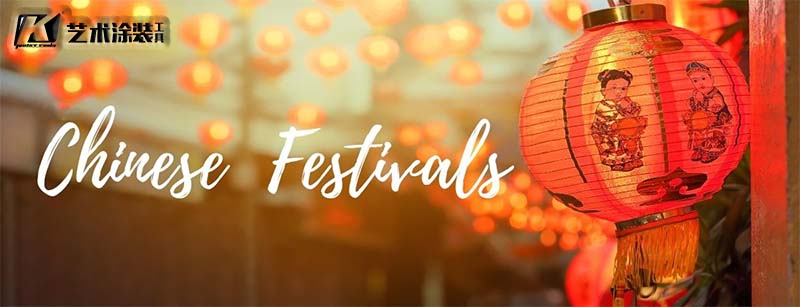
Many of the celebrations commemorated within Chinese culture have been occurring for thousands and thousands of years and are still happening to this day. However, not all of the traditions from ancient China have been able to withstand the test of time. Scroll on as we delve into these ancient Chinese festival traditions, whilst also touching upon the new traditions that have come to light as the generations have progressed.The dates will often vary from year to year as they are celebrated according to the Chinese calendar.
An understatement to say that "Chinese-Festivals" form an important part of Chinese history and culture, what with the many, many days of celebration happening throughout the year. While each festival has its own unique origin and set of customs, they are all rich with culture, traditions, and delicious food, and almost all accompanied by dazzling displays that illuminate the street.
From Chinese New Year to The Hungry Ghost Festival, these are 6 of the most popular Chinese festivals to earmark on Chinese calendar. To know more about the most popular Chinese festivals, check out this list of Chinese festivals, please.
Chinese New Year
First up on our list of Chinese festivals is Lunar New Year, which by the way is probably the most important of all the popular Chinese festivals. The festival has a history of about 3500 years and originated from the Chinese lunar calendar, which is why it is also commonly referred to as the Chinese New Year.
According to legend, the origins of Chinese New Year began with a battle with a mythical lion monster named Nian, who terrorized the village every year. Once it was discovered that wild beasts were afraid of red, noise, and fire, the villagers began the tradition of staying up all night, setting off fireworks, and decorating their houses with red decorations (symbolizing wealth and good luck) year. To this day, Chinese people still wear red during Chinese New Year to ward off bad luck.
As a national holiday in China, this holiday has been regarded as a "Reunion" holiday, where Chinese families reunite with their families in droves from all corners of the world in what has been dubbed the world's largest annual population migration. Fittingly, on Lunar New Year's Eve The tradition of holding family banquets is called "Reunion-dinner" and is considered the most important meal of the year, with excess food and drink.
Although many ancient Chinese New Year traditions are still in vogue, the younger generation has adapted many of them to the society around them. For example, the tradition of giving red packets has recently been adapted in some young circles, with many opting to send virtual red packets via WeChat, the hugely popular Chinese social media app.
Mid-Autumn Festival
The Mid-Autumn Festival, also known as the Lantern Festival, the Mid-Autumn Festival or the Mooncake Festival, is a festival with the theme of viewing the moon and is by far one of the most popular festivals in China. There are many legends about the origin of the Mid-Autumn Festival, from the story of Chang'e (the goddess floating on the moon) to the jade rabbit on the moon. Fittingly, the festival should take place on the day when the moon is at its brightest and fullest.
Like most popular Chinese festivals, the holidays are usually spent with family members, and one of the most common traditions is eating and giving moon cakes. In addition to viewing the moon, people also want to give other items to relatives and friends, such as fruit and even fresh hairy crabs.
Although many Mid-Autumn Festival traditions are still carried out today, some have been lost over the years. For example, in ancient China, many families would go out to worship the moon and Chang'e. However, in this day and age, few younger generations worship the moon. It is more common for families to dine together at home or in restaurants, enjoy moon cakes and make beautifully decorated hanging paper lanterns.
Qingming Festival
Qingming Festival, a festival commemorating the lives of the deceased through a series of elaborate ceremonies. These rituals are all about continuing to honor your ancestors by continuing to maintain their graves.
Every year, family members gather to visit the graves of their ancestors. Traditional dishes such as roast suckling pig, whole steamed chicken and an impressive array of fruits also pay homage to ancestors. The tradition of burning incense and paper (also known as ghost money) is a common custom during Qingming. As a way of paying tribute to the deceased, it is believed that this ritual transfers money to deceased loved ones, ensuring they are comforted in the afterlife.
Today, many traditions related to Qingming can no longer be inherited by some younger generations. This is because more and more Chinese are choosing to live abroad, which makes the act of visiting their ancestors' graves rather difficult. While the festival may not be commonly practiced by younger generations, these traditions are still strictly observed by older generations who still live in the same country or city as their ancestors.
Dragon Boat Festival
The origin of the Dragon Boat Festival is unique. In ancient China, locals rowed small boats to scare fish away to retrieve the body of Qu Yuan, a patriotic poet who threw himself into the river when the kingdom of Chu fell in 278 B.C.
The dragon boat race that still takes place to this day is a symbolic attempt to rescue and restore Qu Yuan's body. As one of the oldest and most traditional festivals, the locals like to hold some traditional festivals on this day, such as eating rice dumplings or hanging calamus and wormwood on the door to drive away evil spirits.
While the tradition of dragon boat racing still prevails, other lesser-known traditions are slowly disappearing and are more prevalent in rural China. Dragon Boat Festival is a national festival loved by many, it sounds fun and lively, and the competition is getting more and more popular.
Winter Solstice
Held on the only day of the year when the night is the longest and the day is the shortest, and when the yin qualities of darkness and cold are at their height , the Winter Solstice Festival is a day meant for eating warm and hearty food. The most commonly enjoyed food during this occasion is tangyuan, a Chinese dessert which is supposed to symbolise family, unity, and prosperity.
Celebrated by the Chinese, Taiwanese, Japanese, Koreans, and Vietnamese, Winter Solstice is a long carried out tradition with years of history and customs that differ depending on where you hail from, with some rituals involving lamb and others dumplings, wontons, or porridge.
The Hungry Ghost Festival
Celebrated over a month-long period, The Hungry Ghost Festival (also known as the Zhongyuan Festival (中元节) in Taoism and Yulanpen Festival (盂兰盆节) in Buddhism) falls on the fifteenth day of the seventh month of the lunar new year during Ghost Month, a time when it is believed that troubled spirits are able to roam the streets and haunt the living. As with all Chinese celebrations, the Hungry Ghost Festival is steeped in rich tradition, including: making money and food offerings to the ghosts, burning incense sticks, joss paper, and even little pieces of origami. These acts all share one purpose: to avoid the wrath of these wandering souls.
Customs and superstitions vary but include paying tribute to the deceased, leaving food and paper offerings, releasing floating water lanterns, the staging of traditional Chinese operas, and the handing out of rice. It’s also recommended that you avoid going out too late, don’t go swimming, and don’t sing or whistle.
Mid-Autumn Festival is an important Moment for Chinese Families
The moon has always been an object of wonder and contemplation. After the telescope was invented, early scientists mapped it. Each crater and "Sea" has been named and renamed successively, reflecting the power of the time.
See Selenium Spectrum. The moon is within reach and becomes a stepping stone to outer space. It offers a stunning glimpse into the workings of our solar system and other moons and planets, and offers a tantalizing close-up destination that humans could one day visit.
Since only one side of the moon is always facing Earth, scientists only saw the far side for the first time in 1959. The Moon Museum offers the public an opportunity to observe and interrogate the far side of the Moon. detail.
For most of history, the moon was the only nighttime source of light for humans. It is used to help travelers navigate and allow people to work. The importance of moonlight to humans has diminished since the invention of candles, gas lamps and, more recently, electric lights.
Living in a town full of high-rise buildings, our relationship with the night sky has become disconnected. We hope this new piece will give people the opportunity to reconnect with the moon and the night sky, while at the same time making them think about its historical and cultural importance. Moonlight plays an important role in nature, triggering the reproduction and migration of many animal species.
What are you thinking when you stare at the moon? Do you have religious, poetic, romantic or scientific ideas? What cultural, historical, scientific or religious stories are related to the moon for the people of your country? Does your culture believe the moon has gender?
From the beginning of human history, the moon has served as a "cultural mirror" for how we believe, understand and see. For centuries, the moon has been interpreted as a god and planet, as well as a timer and a calendar. Different cultures have their own historical, cultural and religious relationship to the Moon, so the meaning and interpretation of the artwork changes depending on where it is displayed.
In the West, the moon and moonlight have romantic connotations, or we might marvel at the wonders of space exploration, with 12 people walking on the lunar surface in the late 1960s and 1970s. When we look up at the moon at night, we may see "man on the moon" and marvel at space exploration, but other cultures see something very different.
In Chinese tradition, the full moon is a symbol of peace, prosperity and family reunion. On the fifteenth day of the eighth lunar month, the full moon is the day of the Mid-Autumn Festival.
The Mid-Autumn Festival is closely related to the full moon, as ancient China found that the moon is at its fullest in each lunar month and brightest in autumn. In fact, the full moon doesn't always coincide perfectly with the fifteenth day of the eighth lunar month. But the Chinese have been told from generation to generation that the moon on the Mid-Autumn Festival is extraordinarily large, round and bright. So people also call it the Mid-Autumn Festival.
In ancient China, offering sacrifices to the moon was an important social ritual for emperors and ordinary people. But there were no specific festivals before the Tang Dynasty (618-907 AD). According to the researchers, the Mid-Autumn Festival was formed in the Tang Dynasty, and sacrifices were gradually replaced by entertainment activities.
In China, the round moon symbolizes harmony and reunion. The Mid-Autumn Festival is an important time for Chinese people to reunite with their families. Family members usually enjoy a hearty dinner at home, after which they enjoy taking a walk outside and enjoying the spectacular view of the full moon.
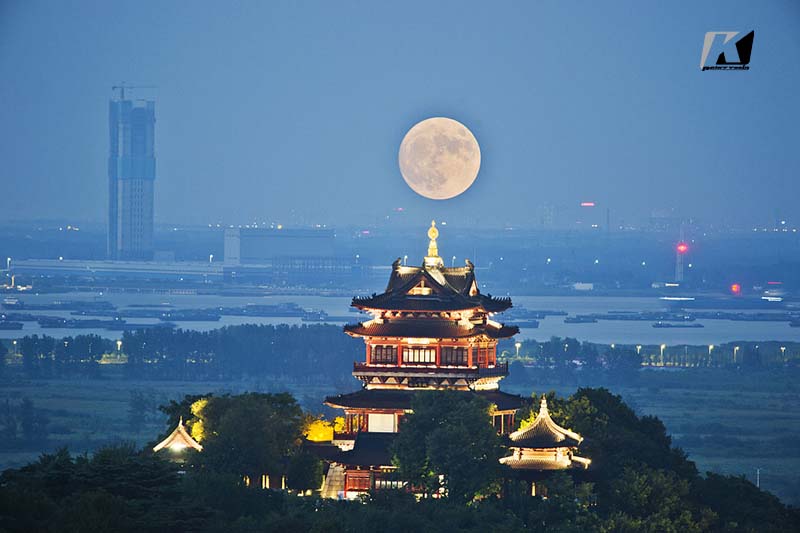
The Mid-Autumn Festival features the beautiful idea that we all share the same moon at the same time. Many famous Chinese ancient poets wrote famous poems using the full moon as a way to express their feelings towards their homes. For thousands of years, the festival and the moon strikes a chord deep for many Chinese, with it being a time to spend with loved ones.
The classic dessert to celebrate the festival is the mooncake, something that's been popular for centuries. A mooncake has the same round shape like full moon, which also implies family reunions. This is only eaten during the festival. Traditionally, the mooncake is cut into pieces that equal the number of people in the family.
Nowadays, mooncakes are an integral part of Mid-Autumn Festival. Different regions of China have their own preferences for stuffing. In recent years, there will always be a nationwide debate on social media on the most popular mooncake flavors.
In China, apart from viewing the moon and eating moon cakes, there are many other traditions and celebrations. Tide watching on the Qiantang River is the most distinctive folk activity on the Mid-Autumn Festival in Zhejiang Province.
In Hunan, Hubei and areas south of the Yangtze River, people make lanterns of various shapes. Lanterns shaped like plants, flowers or animals will be hung on eaves or trees. The family drinks sweet-scented osmanthus wine and eats moon cakes under a beautiful lantern.
Chinese culture values ethics. Like the Chinese New Year and the Dragon Boat Festival, the Mid-Autumn Festival originates from the rhythm of nature and incorporates the essence of Chinese social ethics. Chinese take family very seriously.
The custom of family reunion is the cultural accumulation of their society for thousands of years. It is rooted in the deep psychological structure of every Chinese. It is these "old-fashioned" Chinese customs and festivals that can slow down modern life and give people time to appreciate the beauty of the changing seasons.
Mid-Autumn Festival Traditions and Customs
One of the most commonly implemented traditions during the Mid-Autumn Festival is worshipping the moon, which is especially popular amongst the older generation. In Chinese culture, the moon symbolizes togetherness, hence why it’s tradition to celebrate the Mid-Autumn Festival by having a big feast with friends or family. For those who aren’t able to be with their friends and family during the festival they instead send celebration messages to their loved ones to show they are thinking of them.
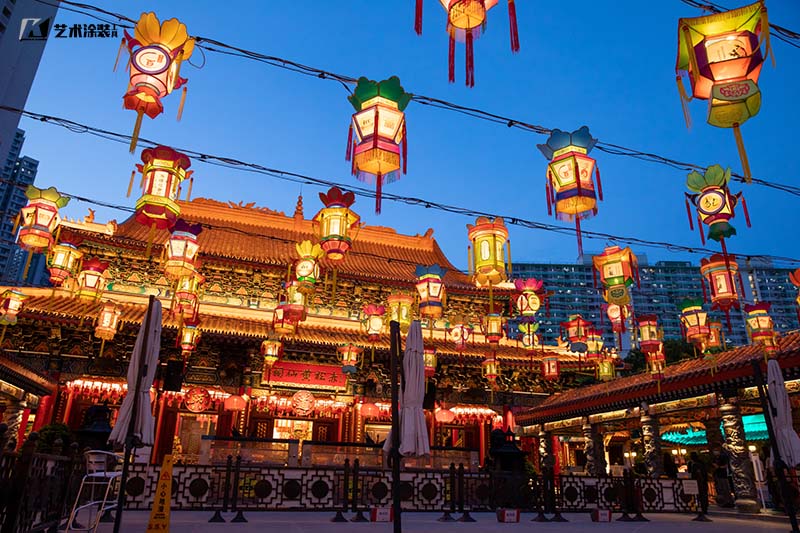
Gifting
When coming together with your family it is common to gift items to show appreciation.
The most commonly gifted items during the Mid-Autumn Festival period are:
1. Mooncakes – the go-to gift
2. Tea – to accompany those delicious mooncakes
3. Fruit baskets – for a healthy but delicious option
4. Osmanthus wine – A traditional pairing with mooncakes
Mid-Autumn Festival Activities
There are a whole host of Mid-Autumn Festival activities to keep you and the kids busy during the festive period, including building your own lanterns to light up the sky and help you better gaze at the moon.
Some of the most popular Mid-Autumn Festival activities include:
a. Reuniting with the family over dinner
b. Eating mooncakes
c. Appreciating the moon
d. Worshiping the moon
e. Make and hanging colorful lanterns
f. Drinking Osmanthus wine
g. Giving gifts
h. Sending celebration messages to loved ones
j. Shopping
Over the years, some traditions like worshiping the moon have slowly started fading away and been replaced with new ones like shopping and travel.
The most commonly eaten food and gifted item during the Mid-Autumn Festival are mooncakes (月饼) which symbolize togetherness and longevity. Originating over 700 years ago, mooncakes have an extensive history behind them. In the 13th century, the Mongols successfully invaded China, starting the oppressive Yuan dynasty (1271-1368).
It is said that i an attempt to overthrow the Mongols, a rebel leader’s confidant Liu Bowen suggested a rebellion to coincide with the Mid-Autumn Festival. Liu Bowen would give residents mooncakes with the permission of the Mongols, as a blessing of longevity to the Mongol leader. However, inside each cake there was a piece of paper saying ‘kill the Mongols on the 15th day of the 8th month.’
This plan was successful and the Mongols were soon overthrown. While it’s hard to gauge just how true these mooncake revolution stories are, they do make for fun retelling every year during the Mid-Autumn period. Today, unlike the story might suggest, mooncakes are typically given as gifts to friends and family as an expression of love and good wishes during the lead up to the Mid-Autumn Festival, and can come in a whole range of different flavors and varieties.
Mid-Autumn isn’t just about mooncakes, though. The tradition of eating pumpkin during the Mid-Autumn Festival, for example, dates all the way back to ancient China, when poorer people couldn’t afford mooncakes and would buy and eat pumpkins instead. Nowadays, eating pumpkin during the Mid-Autumn Festival is pretty common, as is supposed to bring good health.
In Shanghai, where customs differ slightly, people have their own tradition of joining together over dinner to eat hairy crab dipped in vinegar and ginger. This is because hairy crabs are only in ‘season’ in September and October when the crabs are getting ready to lay their eggs (which according to Chinese people is when they are the most delicious), making them a much sought-after delicacy during the festive period.
Another common delicacy eaten during the Mid-Autumn Festival is taro, a tradition that dates back to the Qing dynasty. The pronunciation of Taro (芋头 yù tóu) is closely similar to “余头 (yú tóu)” which means good luck, as Chinese locals believe that eating Taro during Mid-Autumn Festival brings good luck as well as expelling evil spirits and disaster.
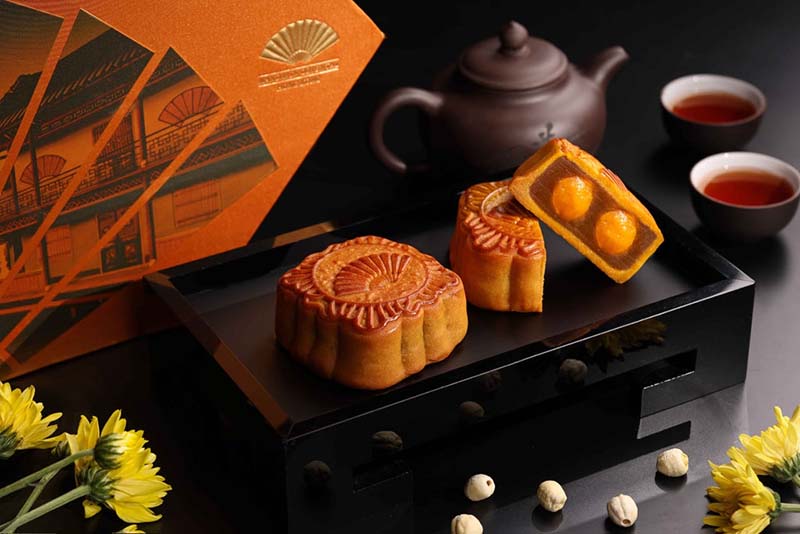
About Moon Cakes
Everyone knows Chinese New Year - dragon dances, fireworks, awesome spectacles. But to Westerners, little is known about the Mid-Autumn Festival - the festival is almost as important to the Chinese as their famous New Year. Celebrating every - you guessed it - fall, this auspicious time joins the lunar cycle to commemorate the annual harvest.
This year's Mid-Autumn Festival falls on the fifteenth day of the eighth lunar month and is on September 10th. A special delicacy underpins this sacred event - moon cakes. Like the pancakes of Confession Tuesday, intertwined with this time of year are mooncakes, so the Mid-Autumn Festival has earned its affectionate nickname, Mooncake Day.
Made from a sweet, dense pastry, mooncakes are filled with a delicious red bean, sesame or lotus seed paste, and topped with an intricate pattern symbolising good-luck sentiments like ‘longevity’ or ‘harmony’. Inside, to represent the full moon there’ll often be a salted whole duck egg yolk. Chinese will gather together and eat slices of mooncake on Mid-Autumn Festival, a national Bank Holiday.
In the canon of traditional Chinese desserts, the mooncake is the most decadent and storied of them all. Golden-baked, round in shape, and filled with sweet lotus seed paste encasing two salted duck egg yolks representing the moon. For centuries, these rich delicacies have been served during Mid-Autumn Festival — on the 15th day of the 8th lunar month when a full moon emerges at night — as a ritual offering to the mythical moon goddess of immortality, Chang E.
They were a favourite of Empress Dowager Cixi and, as folklore goes, an essential tool of the Ming revolutionaries, who used them to smuggle secret messages while overthrowing the Mongolian rulers of China at the end of the Yuan dynasty.
Celebrating the Mid-Autumn Festival is an important part of Chinese culture and it provides the opportunity for families and friends to spend quality time together. Enjoy the holiday with the seasonal collection of mooncakes and hampers. A range of traditional mooncakes and specialty flavours, such as lava chocolate and red bean paste with dried tangerine peel, will be offered to make the occasion truly memorable.
Today, mooncakes remain an essential part of Chinese culture, lavishly packaged and shared with family and friends as a symbol of completeness and reunion. While time-honoured recipes hold strong to tradition, modern adaptations have flourished with everything from indulgent caviar-packed treats to mooncake-flavoured macarons.
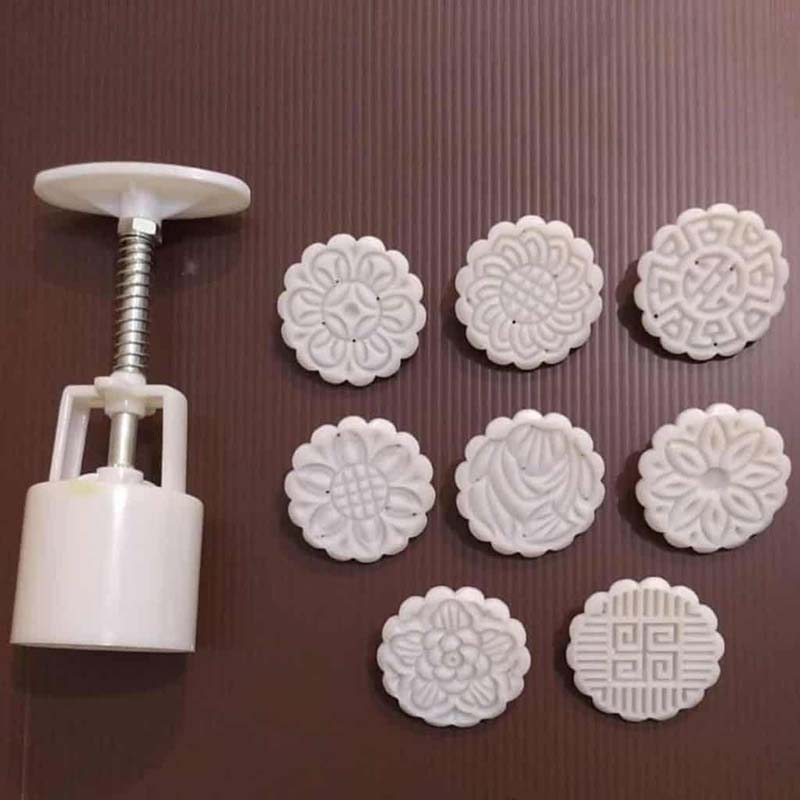
Mould to make yue bing
How to Make Your Own Mooncakes
Mooncakes have also become a fairly common food throughout Asia. During September (the holiday season), mooncakes can be found everywhere, from street vendors to Starbucks. Therefore, mooncakes are famous throughout Asia.
Their prices have skyrocketed recently due to their soaring popularity and the practice of buying them as gifts for friends, colleagues and family. Making mooncakes at home may be more cost-effective and a healthier option! This is because you can control which artificial colors and preservatives are added to the mooncakes.
The shells of mooncakes are traditionally made from a dough consisting of golden syrup (or invert syrup), lye (alkaline) water, vegetable oil and plain flour. Extra flour and egg wash for dusting and brushing. Other more modern mooncake recipes use cornstarch and baking soda. Our recipes will focus on the traditional method of making mooncakes.
However, some modern additions will be included for ease of access. There are many kinds of fillings commonly used in moon cakes. Some of the most common are white lotus seeds, green tea, red bean paste, five kernels (mixed nuts), salted egg yolk, and yam. Other mooncake fillings include minced pork, ice cream, durian, chicken floss, cream cheese and seafood!
Mooncakes have a special shape, texture and taste that set them apart from other snacks. This is mainly because of the tools and ingredients used to make mooncake dough. Key Tools The most important and least familiar tool for making these desserts is of course the mold. It can be easily purchased online or found at specialty bakeries or Asian grocery stores during the festive season.
Other important equipment includes food processors and kitchen scales. Typically, the filling for each mooncake is about 40 to 45 grams. Silicone brushes are fine, but you can use any clean brush instead.
Golden syrup or pour syrup is also used when making the dough. It's less sweet than table sugar, and desserts made with it don't crystallize and stay firm. It is common in major supermarkets and can be purchased online.
Another hard-to-find main mooncake ingredient is lye or sweet water. This is a common ingredient in Chinese restaurants, but is almost unheard of in most Western households. Alkaline in nature, it neutralizes the acidity of the golden syrup, and it gives the dough its traditional yellow color without the use of eggs or cornmeal.
Cake flour is the best flour because its gluten level creates a consistency that is not too firm and not too soft for pastries. We recommend mixing ⅓ teaspoon of lye water per 250 grams of cake flour. You can also use all-purpose flour as a substitute, however, the cake consistency will be slightly different. In this case, the ratio is about 1 gram of lye water to 40-45 grams of all-purpose flour.
If you don't have lye water for mooncake dough, you can make an alternative lye water at home. Place one portion of baking soda in the oven and bake at 175 °C / 350 °F for 30 minutes. Then add 4 parts water and stir until dissolved. Use it instead of alkaline water.
Mid-Autumn Festival gift represents good wishes - G.SB PAINT TOOLS CO.,LTD.
Every festive season, I miss my relatives, and I look forward to gathering with each other for a long time. On the morning of September 5th, when the Mid-Autumn Festival was approaching, the G.SB labor union carried out the employee condolence activity of “Send Mooncakes on the Full Moon and Mid-Autumn Festival”, and delivered sweet and sweet mooncakes and fruit gift boxes to all employees of the company, and also sent them to the company. The leaders' deep care and full Mid-Autumn Festival blessings the staff.
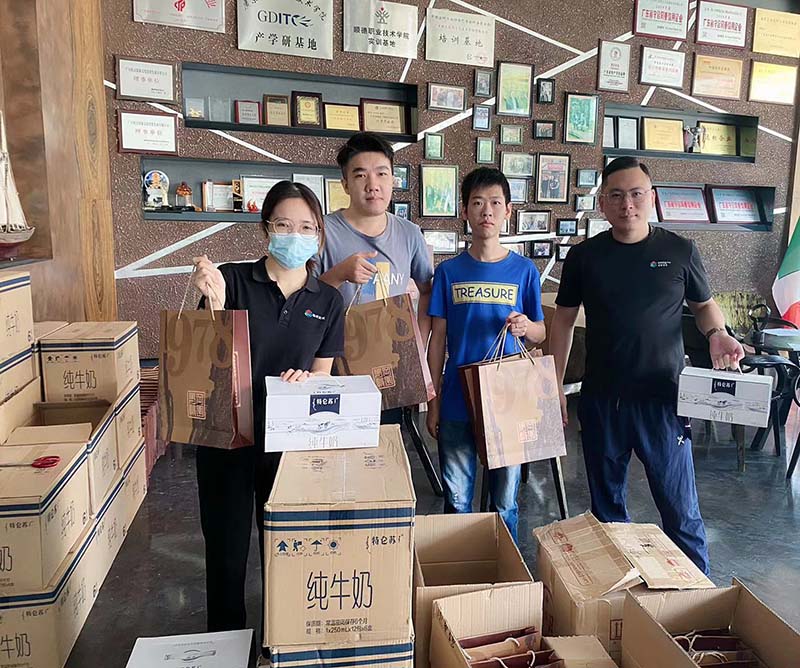
At the event site, the employees who received the gifts were filled with happiness and smiles on their faces. A Mid-Autumn Festival gift represents good wishes, conveys G.SB PAINT TOOLS CO.,LTD. deep care for employees, adds a warm and peaceful atmosphere to the Mid-Autumn Festival, further shortens the distance between the company and employees, and enhances the happiness and belonging of employees.
Mid-autumn gifts filled with the company's blessings were distributed to each employee one after another. The scene was very lively. Every employee's face was filled with happy smiles, and they expressed their gratitude to the company's leaders for their care. "The moon is the hometown", the Mid-Autumn Festival, as a reunion festival, carries everyone's nostalgia and infinite yearning for "home". I hope this good wish from G.SB can bring warmth and happiness to every employee like "going home". Comfortable.
Our company has been adhering to the management concept of "people-oriented" and pays attention to humanistic care. Over the years, during traditional festivals such as Dragon Boat Festival and Mid-Autumn Festival, the company will prepare considerate and affordable benefits for employees, so that every employee can feel the warmth of our big family.
The heavy welfare brought laughter to everyone, and it also brought a lot of emotion. The welfare was held in the hands, warm in the heart, and distributed on the spot. The faces of the employees were filled with joy, and each share carried the satisfaction. Blessings of sweetness and peace were passed on in the hands, and everyone returned home full of laughter and joy.
In recent years, G.SB has been paying attention to the welfare of employees. Every traditional festival, the enterprise union will send blessings to employees at the first time, and during the festival, the staff canteen provides free meal service for everyone, so that everyone can benefit from it. , but also through the development of a variety of cultural activities, so that employees feel the festive atmosphere and at the same time feel the care and blessings from the company.















